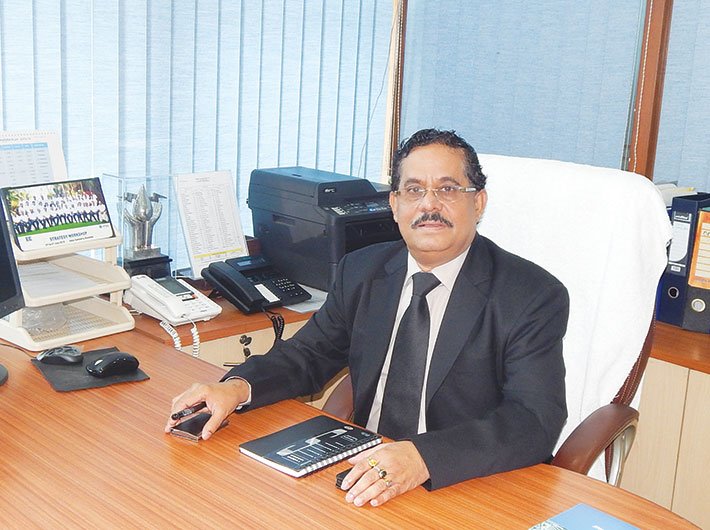HLL Infra Tech Services Limited (HITES), a wholly owned subsidiary of public sector firm HLL Lifecare Limited (HLL), has recently secured its first global contract to offer consultancy services for the construction of two hospitals in the Republic of Guinea. The company is spearheading experiments to find the best suited model for healthcare infrastructure for rural India. SN Sathu, CEO of HITES, spoke to Jasleen Kaur about the work the company is undertaking to evolve the healthcare system of India in an affordable way.
What are the major works undertaken by HITES since its inception?
Soon after the formation of HITES we were appointed as the executive agency of the ministry of health and family welfare [MoHFW]. Thereafter, we were given projects for infrastructural development and upgradation of medical institutions under phase III of the pradhan mantri swasthya suraksha yojana [PMSSY].
For infrastructural development, we are working to upgrade 12 medical institutions – two each in Kerala, Tamil Nadu, Karnataka, Andhra Pradesh and Bihar, and one each in Telangana and Gujarat. Out of these 12 projects, construction of nine projects has already started. Apart from this, HITES has also been given two projects by the state of Uttar Pradesh – to set up 200-bed mother and child hospitals.
Also, HITES has been given the work of procurement support agency of the MoHFW for upgradation of 39 medical colleges in this phase of PMSSY. The process has already started. We are also appointed as the facility management executing agency for the All India Institute of Medical Sciences (AIIMS) Patna, where we will provide housekeeping, security and other hospital support services.
As the executive agency for upgradation of 12 medical institutions, what are the challenges?
There are multiple stakeholders involved in this work, like the central and the state governments. This makes the job challenging. The central government has been supporting the state government under PMSSY upgradation programme. There are two schemes under it – first is the setting up of new AIIMS and the other is upgradation of existing medical institutions. By setting up new AIIMS, the government of India wants to reduce traffic at AIIMS, Delhi, and also increase the number of postgraduates and specialists. Six AIIMS are already at the final stage of completion.
Government hospitals across the country are overburdened. There is also shortage of staff. Is this a big obstacle to improving healthcare management in our country?
It is. Every state government has a few hospitals which can cater to the needs of all the people and handle sensitive cases. Also bigger hospitals are located in the state capital. To reduce the traffic there and to increase the number of postgraduate seats in medical institutions, the district level general hospitals are being upgraded to super specialty hospitals with postgraduate seats under the PMSSY.
Shouldn’t the government spending on healthcare go up to give impetus to the sector?
The government is committed and sincere in constantly evolving best practices. The decisions are taken very quickly today. The spending at present is less than what it should be, but it is picking up. They are switching from a budget-driven to a demand-driven approach in the health sector.
In most government hospitals the maintenance of healthcare infrastructure has been poor. What kind of support can HITES provide to the government?
This is a serious issue. It is mainly because of the huge traffic flow in hospitals that maintenance becomes difficult. This is one grey area and it has huge potential. We have formed a separate division – facility management – because we did not have direct skills to undertake such work. So through an extensive process, we empanelled many international companies as partners.
We have done mechanised cleaning of AIIMS [cleaning the external area] and the new blocks at Guru Teg Bahadur hospital in Delhi. We are planning to get into the district hospitals as well. We do not intend to charge high fee nor does the government allow us to do so. We are also competing for bidding while getting the tender. But we also lose out in competitions.
Do you think we need a low-cost and low-maintenance healthcare infrastructure, especially in rural areas? Is there any research and development happening on this front?
HITES was established in April 2014 and I took over as CEO in June. Soon after taking over I realised that everyone is looking for cost-effective infrastructure. We have hired a retired chief architect of the government of India, who has over 35 years of experience in healthcare infrastructure, as our chief advisor. Our team is working round-the-clock on this. We have made a prototype model for mother and child hospitals. We have also prepared a standard model for geriatric care, based on which hospitals can be established. We have come up with a standard design which includes costing of hospital, faculty and equipment requirement and the requirement of area for construction.
The central government has appreciated it and will write to state governments to avail our services.
It is a cost-effective model and will be established by doing a market analysis of the local area.
Have you come across any model which is best suited for rural areas of India?
We did an experiment where the entire community and primary health centres [PHC] in Kerala were upgraded. It is running well. But we were not remunerated. Within the broad framework we know that it is a successful model. The state government and people at large were benefitted. So we are now working on it to make it viable for us.
We were given the mandate under the national health mission [NHM] to upgrade the community health centres [CHCs] and PHCs. We prepared a prototype design. We upgraded some of the existing centres, and at some locations we built new centres with a standard model, which was ISO certified. Our aim is to make things affordable. And we will fill the gap that exists in the healthcare sector.
Do you think that the government should join hands with the private sector in establishing healthcare infrastructure?
Personally, I feel the government alone cannot do the entire job. We must allow the private sector to come up, with a lot of checks and balances, which must be done by the government. The private players can then provide services at the remotest areas and make money as well. Both have to work together. Only then the overall health sector will improve.
jasleen@governancenow.com
(The interview appears in the September 16-30, 2016 issue)

